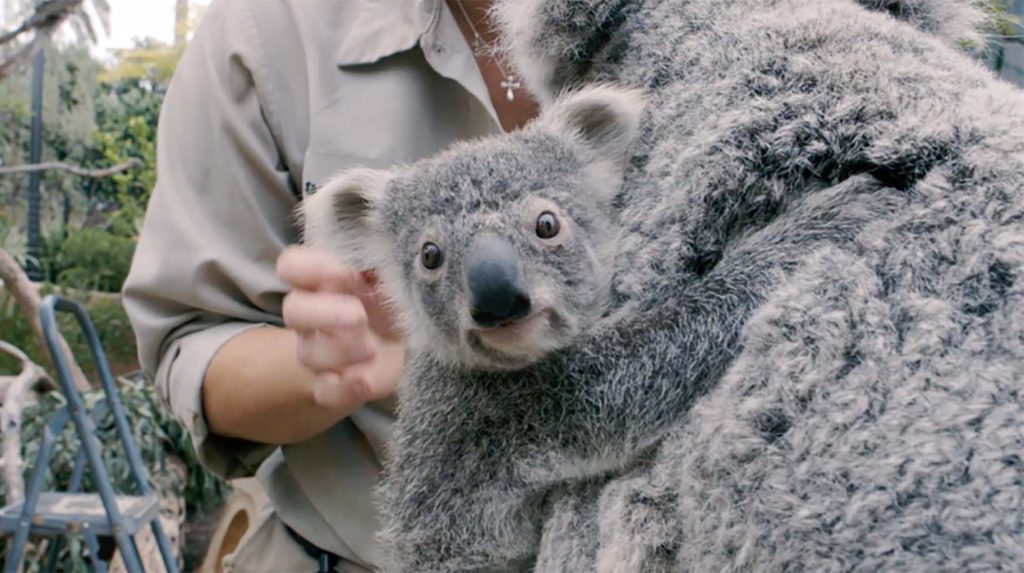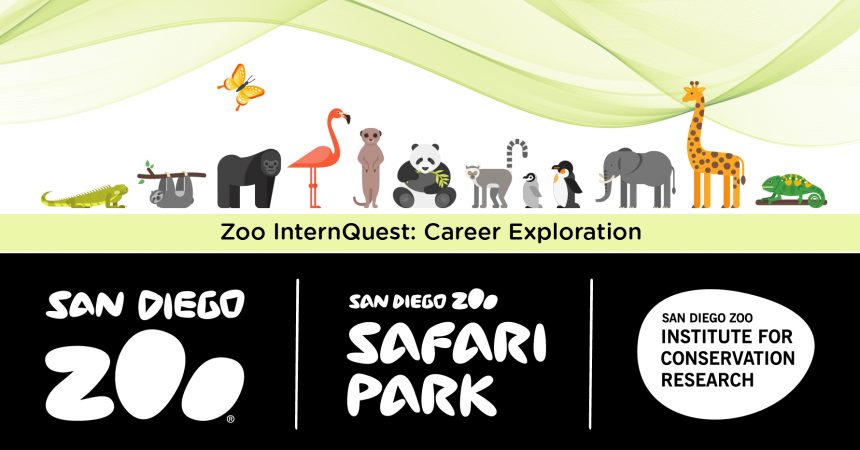Zoo Internquest is a seven-week career exploration program for San Diego County high school juniors and seniors. Students have the unique opportunity to meet professionals working for the San Diego Zoo, Safari Park, and Institute for Conservation Research, learn about their jobs, and then blog about their experience online. Follow their adventures here on the Zoo’s website!
 This week, Internquest met with San Diego Zoo Global’s Animal Welfare Specialist, Jessica Sheftel. As the Animal Welfare Specialist for both the Zoo and Safari Park, she conducts behavioral research projects, consults with the keepers, and works on developing ways to enrich the lives of all the species in the Zoo’s collection. More specifically, this process depends on the type of animal being enriched; satisfying a cockatoo with a homemade toy is easy, but trying to develop ways to enrich a koala is much harder. Why is koala enrichment such a challenge?
This week, Internquest met with San Diego Zoo Global’s Animal Welfare Specialist, Jessica Sheftel. As the Animal Welfare Specialist for both the Zoo and Safari Park, she conducts behavioral research projects, consults with the keepers, and works on developing ways to enrich the lives of all the species in the Zoo’s collection. More specifically, this process depends on the type of animal being enriched; satisfying a cockatoo with a homemade toy is easy, but trying to develop ways to enrich a koala is much harder. Why is koala enrichment such a challenge?
It’s a common misconception that koalas are a type of bear. Koalas are actually members of the marsupial family, which includes kangaroos, wallabies, wallaroos, wombats, possums, and opossums. Similar to other marsupials, female koalas have a pouch in which they carry their baby (commonly called a joey). A newborn joey is about the size of a jellybean and can’t see or hear. Shortly after its birth, the joey climbs into its mother’s pouch and attaches itself to one of her nipples, where it stays for the next six months. When the joey grows too large for the pouch, it climbs onto its mother’s back, where it stays for the next year before it is ready to live on its own.
Koalas live in the forests of eucalyptus trees native to southeastern and eastern Australia. Although eucalyptus is toxic to most animals, the leaves are the only source of food for koalas. Special bacteria in their digestive tract enable them to break down the toxic compounds and safely consume the leaves. Despite only eating eucalyptus leaves, koalas still get a varied palette as there are over 600 kinds of eucalyptus in Australia and each one tastes different!
Koalas are arboreal animals that spend a majority of their day sleeping. They perch themselves on a branch and rest for up to 20 hours each day, primarily as a way to conserve energy since their diet is low in nutritional value. However, they do occasionally make the 150-foot descent to the ground to move between trees. Here, they are at risk to predators, such as owls, domestic dogs, and cars, which have contributed to making the once common and widespread koala vulnerable to extinction. Habitat loss has also played a major role in their decline, and the San Diego Zoo proudly supports the cooperative managed-care programs, research, and habitat conservation projects dedicated to ensuring the survival of this species.
Hopefully, it is now clear why developing ideas to enrich a koala can be so challenging. Due to their sleep schedule, there are only several hours per day that they can participate in any type of enrichment activity, and these hours are generally spent eating. The fact that koalas only eat eucalyptus adds to the challenge. It is difficult to experiment with different foods and discover what the koalas like. Despite these challenges, the Zoo has found multiple ways to increase the quality of life for its koalas, whether it be in their habitat design or by giving them several types of eucalyptus to choose from each day.
Chances are, if you go to visit a koala exhibit they will be in the midst of taking a nice nap. However, don’t let this deter you from checking out these fascinating animals next time you find yourself at the San Diego Zoo. Home to one of the largest koala colonies and most successful breeding program outside of Australia, the koala exhibit is definitely one you won’t want to miss.
Olivia, Species Spotlight
Week Five, Fall Session 2018


